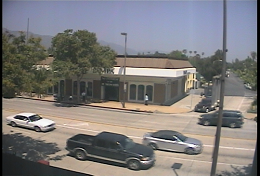In today’s digital world, video footage has become one of the most powerful tools in criminal investigations, legal proceedings, and private security. Whether it’s surveillance from a store camera, dashboard footage, or a mobile recording, the quality of this footage often determines its value. This is where video enhancement software and video investigation software come into play. These tools allow professionals to clarify, analyze, and extract crucial evidence through forensic video enhancement, helping uncover the truth one frame at a time.
What is Video Enhancement Software?
Video enhancement software is a specialized tool designed to improve the visual quality of recorded footage. It offers a range of filters and algorithms that reduce noise, sharpen blurry images, adjust lighting, and stabilize shaky footage. These capabilities are particularly vital when dealing with low-quality video from security cameras, smartphones, or night-time recordings.
The ultimate goal of this software is to make details—such as faces, license plates, and movements—clearer and more discernible, often making the difference between vague evidence and solid proof.
The Role of Video Investigation Software in Forensics
Video investigation software goes a step beyond just enhancing visuals. It provides a comprehensive platform for analyzing, cataloging, and managing video evidence. Law enforcement agencies and forensic professionals use these tools to:
- Synchronize footage from multiple cameras
- Track and tag persons or objects of interest
- Create chronological timelines
- Compare suspect movement across various locations
This integrated approach enables a streamlined workflow, reducing investigation time and improving the accuracy of conclusions.
Forensic Video Enhancement: Techniques and Importance
Forensic video enhancement refers to the process of scientifically improving the quality of a video to aid legal and investigative review. Unlike general editing, forensic enhancement follows strict protocols to ensure the integrity of the evidence is maintained and that any modifications are traceable and admissible in court.
Common Techniques in Forensic Video Enhancement:
- De-noising: Removes grain or pixelation
- Frame averaging: Increases image clarity using multiple frames
- Contrast and brightness adjustment: Enhances visibility in low-light conditions
- Zoom and crop: Focuses on areas of interest
- Color correction: Normalizes colors to reveal hidden details
- Stabilization: Corrects jittery camera motion for clearer viewing
Each of these processes helps bring out finer details that could go unnoticed in the raw footage, potentially unveiling critical clues for investigators.
Use Cases in Real Investigations
Forensic teams and private investigators rely on video enhancement software in a variety of real-world situations:
- Criminal Investigations: Clarifying a suspect’s facial features or identifying license plate numbers.
- Traffic Incidents: Analyzing the speed, direction, and fault in vehicular accidents.
- Insurance Fraud: Verifying the legitimacy of claims using surveillance footage.
- Workplace Incidents: Reviewing security footage to resolve disputes or assess liability.
- Civil Litigation: Supporting or disproving claims through enhanced video evidence.
With the right tools and expertise, poor-quality footage can be transformed into court-admissible evidence.
Challenges and Ethical Considerations
While video investigation software is a powerful asset, it comes with challenges. Ensuring that enhancements do not distort reality is crucial. Over-processing or applying filters that introduce artifacts can compromise the validity of the footage. That’s why forensic video experts follow strict chain-of-custody protocols and use tools that allow reversible editing.
Moreover, ethical considerations around privacy and the manipulation of footage must be respected. Transparency in methodology ensures that enhanced video holds up under legal scrutiny.
Final Thoughts
The rise of digital video has revolutionized the way forensic professionals approach investigations. Through video enhancement software and video investigation software, experts can elevate blurred and unclear footage into detailed, analyzable evidence. The field of forensic video enhancement continues to evolve, offering new possibilities for justice and truth.
Whether you’re involved in law enforcement, private investigations, or digital forensics, having access to advanced tools is vital. As technology continues to develop, so does our ability to see what once seemed invisible.
FAQs
Q1: Is video enhancement the same as video editing?
No. Video enhancement improves video clarity without altering content, while editing often changes structure or meaning for presentation.
Q2: Can forensic video enhancement make any video usable?
Not always. While it can significantly improve poor footage, the results depend on the original video’s resolution, lighting, and compression.
Q3: Is enhanced video admissible in court?
Yes—if processed by certified tools and professionals following forensic standards that maintain chain of custody and data integrity.
Q4: How long does it take to enhance a video?
It depends on the footage length and required enhancements. Simple tasks can take minutes; complex forensic analysis may take hours or days.
Q5: What skills are needed to use forensic video tools?
Operators often need training in image processing, forensic methodology, and legal standards for video evidence handling.







